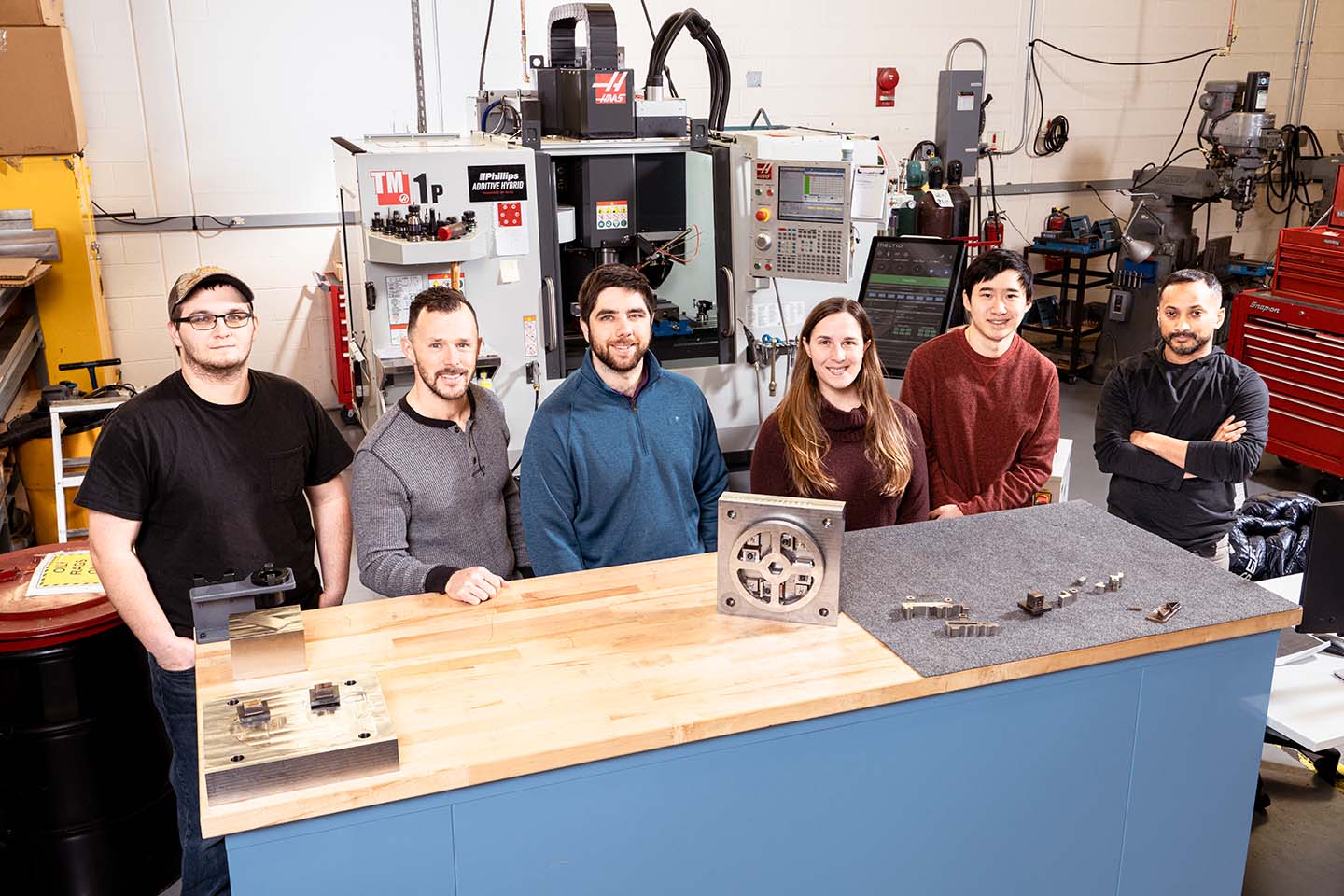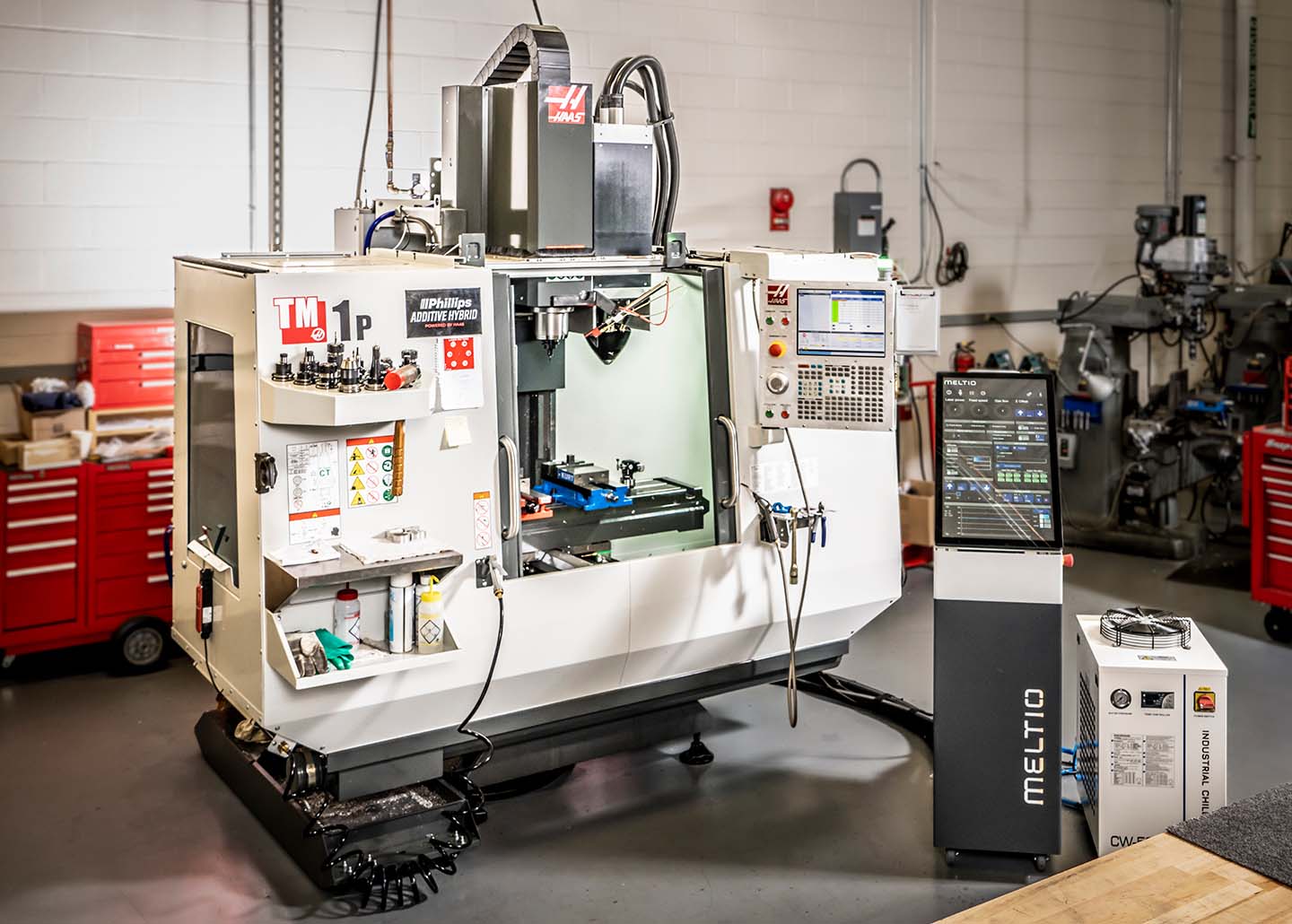Press Release
Johns Hopkins APL Installs First Hybrid Metal 3D Printer Onboard a Naval Ship
The printer is part of a suite of manufacturing assets enabling rapid and efficient maintenance of vessels at sea.
Tue, 03/14/2023 - 14:35
Engineers at the Johns Hopkins Applied Physics Laboratory (APL) in Laurel, Maryland, in partnership with the Naval Surface Force Atlantic and Naval Sea Systems Command (NAVSEA) Technology Office, installed the first hybrid metal 3D printer onboard a Navy ship. 3D printing, technically referred to as additive manufacturing (AM), enables efficient and timely production of mission-critical components while out at sea.
The system, installed aboard the USS Bataan (LHD-5) last October, includes a Haas TM-1 CNC mill with a Meltio 3D laser metal wire print head. It prints 316L stainless steel, an important material in U.S. Navy ship systems. Weighing nearly two tons, the machine is 6.5 feet tall, 5.5 feet back to front and 8 feet wide, and is capable of both additive and subtractive manufacturing. The hybrid process can additively deposit material layer by layer and subsequently and selectively cut away material to produce a final product. The team also installed a Markforged X7 polymer-based printer, which can produce ready-to-be-used parts or prototypes of parts before they’re printed in metal.
“The metal hybrid system installed on Bataan will improve ship self-sufficiency and enable the sailors to fabricate parts to keep systems operational,” said Scott Storms, NAVSEA 05T Deputy Program Manager supporting the NAVSEA 05T Additive Manufacturing Research and Development program. “The combination of the polymer printer alongside the metal hybrid system offers a high-performing additive suite that will allow the fleet to efficiently prototype and print end-use parts.”
To support the system and the sailors using it, APL also developed a digital manufacturing environment (DME), which is a communication system that enables the transmission of NAVSEA-developed technical data packages (TDPs) from shore to ship. TDPs provide instructions and print files to build parts on the printers. The DME could be utilized in future manufacturing installments across the fleet.
“This project expands on APL’s decades-long experience of installations of critical systems aboard naval platforms and is part of a continued effort to further increase the robustness and efficiency of maritime logistics,” said Zhiyong Xia, APL program manager for Expeditionary Logistics.

